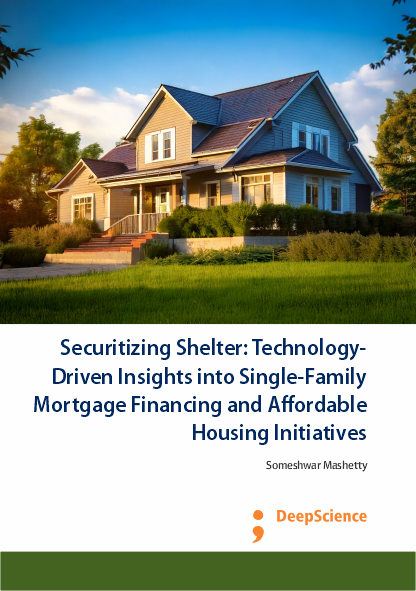Private sector approaches to expanding access to stable living
Synopsis
Conceptually, the cornerstone outcomes of a good education are ability and healthy character (Kumar et al., 2025a; Kumar et al., 2025b). We know, in the real world, that safe, stable housing is an essential building block in the development of those outcomes for individuals. Communities of people who possess the foundational components (physical, emotional, spiritual, and cognitive) for a healthy life are vibrant, economically sustainable communities. The gravest gift society can bestow on a family is hopelessness about their future and the present living environment. A gravely threatened foundation of a community is the availability of a stable home.
This essay explores private sector roles in helping make decent and safe homes available to people in our communities. Essay objectives include, first, debunking any perception that today’s significant housing challenges represent insurmountable public sector responsibilities. Second, we offer a vehicle through which business executives can lead discussions in their communities that challenge local citizens and local community leadership on critically important and seldom-discussed aspects of extending homeownership or rentals to more working families: the importance of our children’s surroundings, the reality that even in some of our poorest neighborhoods cost-effective solutions exist, and why leaders in all of civil society, but especially the economic leadership, should see involvement in developing solutions as a part of their fundamental responsibility for communities. Economic development only happens in vibrant communities. Business does not get a pass here. Each school week begins with a simple challenge to those who discuss this essay: “Close your eyes. Visualize the inside of your family house. Placing yourselves inside, ask these two questions.
First, remove your significant adult support and pretend you are an 8-, 10-, or 12-year-old child. Assume you are coming home from school today. Think about what you will see, smell, and hear as you open the door. Another powerful exercise firms have used is to substitute yourself in place of just the children in this exercise and visualize the living circumstances as if you were a 10-year-old coming home from school.
Is this a simple parlor game or a real differentiator?
4.1.1. Significance of Stable Homes for Communities
Significance of Stable Homes: Communities in which individuals can count on having a stable place to live are, in many ways, more attractive places to live. When housed residents live side by side in stable living environments, neighbors can develop social relationships. Watching out for one another fosters safety, supports children and families, and creates a social fabric that helps build community. Homes that people know will be around in the future tend to be better maintained and are upgraded more frequently. People are less vulnerable when living arrangements are stable. Social relationships in stable living environments can be relied upon when times are tough. Communities with Stable Homes Tend to Be Healthier: Features of communities in which living situations are relatively stable tend to be related to better health outcomes. Because resident migration is reduced, stability can facilitate greater collaboration for the provision of social services. In turn, stable living can make accessing those services easier. However, we can conclude from the evidence that has been presented that stable housing arrangements can impact health either directly or indirectly. In particular, there is an established relationship between housing instability and general well-being. If this is true, then stable living conditions positively affect factors like physical self-care, productivity in typical life activities, and community and civic activities. For families with children, a stable living environment can open up more educational opportunities for their children. In stable living environments, property values and businesses flourish rather than being susceptible to chronic disinvestment and crime. Such findings reinforce the importance of developing effective strategies to create stability. Overall, stable living conditions help protect individuals, strengthen families and communities, and foster positive change in communities undergoing revitalization.













